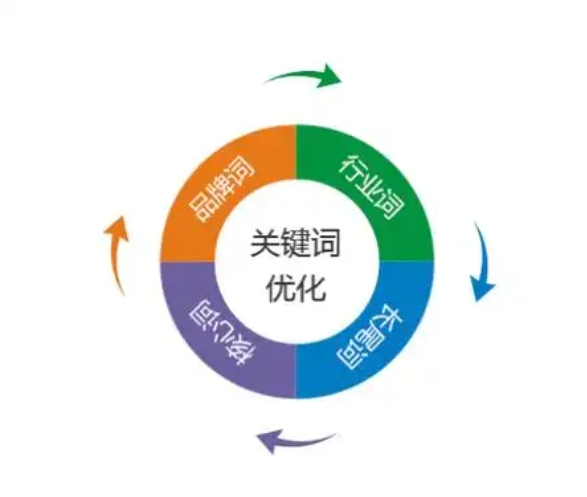How to implement SEO optimization in mini-program development?
- latest articles
- 1.DApp Development & Customization: Merging Diverse Market Needs with User Experience 2.Analysis of the Core Technical System in DApp Project Development 3.How to achieve cross-chain interoperability in Web3 projects? 4.How does the tokenization of points reconstruct the e-commerce ecosystem? 5.How to Set and Track Data Metrics for a Points Mall? 6.What is DApp Development? Core Concepts and Technical Analysis 7.Inventory of commonly used Web3 development tools and usage tips 8.Development of a Distribution System Integrated with Social E-commerce 9.Six Key Steps for Businesses to Build a Points Mall System 10.What is DApp Development? A Comprehensive Guide from Concept to Implementation
- Popular Articles
- 1.Future Trends and Technology Predictions for APP Development in 2025 2.Analysis of the DeFi Ecosystem: How Developers Can Participate in Decentralized Finance Innovation 3.From Zero to One: How PI Mall Revolutionizes the Traditional E-commerce Model 4.DAPP Development | Best Practices for Professional Customization and Rapid Launch 5.Recommended by the Web3 developer community: the most noteworthy forums and resources 6.From Cloud Computing to Computing Power Leasing: Building a Flexible and Scalable Computing Resource Platform 7.How to Develop a Successful Douyin Mini Program: Technical Architecture and Best Practices 8.Shared Bike System APP: The Convenient Choice in the Era of Smart Travel 9.How to Create a Successful Dating App: From Needs Analysis to User Experience Design 10.From Design to Development: The Complete Process of Bringing an APP Idea to Life
In modern internet applications, mini-programs, as lightweight applications, have been widely used in various scenarios. With their expanding usage, how to enhance the visibility and traffic of mini-programs has become a key focus for developers. One important method to achieve this is SEO optimization. This article will delve into how to implement SEO optimization in mini-program development, starting from the basic concepts of SEO, gradually analyzing the key factors affecting mini-program SEO optimization, and providing a series of effective optimization strategies.
I. What is SEO Optimization?
SEO (Search Engine Optimization) refers to a series of technical methods aimed at improving a website's ranking in search engines, thereby increasing its exposure and traffic. In traditional websites, SEO optimization primarily focuses on factors such as webpage content, keywords, and external links. However, for mini-programs, SEO optimization differs because mini-programs do not interact directly with search engines like websites do; instead, they rely on platform-internal search engines and some external tools and strategies.
Although mini-programs do not depend on search engines for ranking like traditional websites, they have their own "search engines" within certain application platforms, such as WeChat Search and Alipay Search. Therefore, to increase the exposure and user visits of mini-programs on these platforms, SEO optimization is necessary.
II. Challenges of Mini-Program SEO Optimization
Compared to traditional website SEO optimization, mini-program SEO optimization faces some unique challenges:
Platform Closedness: Mini-programs are typically developed on platforms like WeChat and Alipay, which have limited access for external search engines, restricting the application of traditional SEO methods. Developers cannot acquire traffic through search engines like Google or Bing as they can with website SEO optimization.
Limited Content: The content of mini-programs is usually not as rich as that of traditional websites, with lower editability and searchability of pages. This requires developers to enhance the visibility of mini-programs within limited space through effective strategies.
Dynamic Content: The content of mini-programs is often dynamically generated, whereas traditional SEO optimization relies more on static content optimization. This requires developers to consider how to make dynamic content better recognized and indexed by search engines and platforms during mini-program design.
III. Key Factors in Mini-Program SEO Optimization
Despite the challenges, developers can still effectively perform mini-program SEO optimization through reasonable strategies and technical methods. Below are introductions to several key factors in mini-program SEO optimization.
1. Keyword Optimization
Keyword optimization is a fundamental part of SEO optimization. In mini-programs, keyword optimization is equally crucial. Developers need to select appropriate keywords based on the mini-program's functionality and user needs and distribute these keywords reasonably in the mini-program's title, description, page content, etc. Here are some important steps for keyword optimization:
Keyword Selection: Through market research and user demand analysis, choose keywords that users frequently search for and are relevant to the mini-program.
Keyword Placement: Reasonably place the selected keywords in the mini-program's title, description, page content, etc., but avoid keyword stuffing to maintain natural flow.
Long-Tail Keyword Effect: In addition to common primary keywords, consider some long-tail keywords. Although these have lower search volumes, they can precisely attract target users.
2. Optimization of Mini-Program Title and Description
The title and description of a mini-program are key factors affecting its search ranking within the platform. The title and description should not only be concise and clear but also accurately convey the mini-program's functionality and value. When writing the title and description, it is recommended to follow these principles:
Clarity and Conciseness: The title should be short and clear, accurately describing the mini-program's functionality without being overly lengthy.
Inclusion of Keywords: The title and description should include keywords relevant to the mini-program to help the platform better understand the content, thereby improving its ranking in search results.
Highlighting Features: The description should emphasize the mini-program's unique selling points or features to attract user clicks and increase retention rates.
3. Optimization of Mini-Program Content
The optimization of mini-program content mainly includes page content and interactive content optimization. Since mini-program content is mostly dynamically generated, developers need to ensure that this content can be recognized and indexed by the platform's search engine through appropriate technical methods. Here are some optimization suggestions:
Clear Structure: The page structure of the mini-program should be clear and orderly, making it easy for the platform's search engine to crawl and understand. Each piece of content on the page should have a clear position and label.
Optimize Loading Speed: The loading speed of a mini-program is an important factor affecting user experience and ranking. Developers should improve loading speed by reducing page resources and compressing images.
Handling Dynamic Content: For dynamically generated content, methods such as opening API interfaces and providing detailed label information can help the platform better recognize and index the content.
4. External Traffic and Social Media Promotion
Although mini-program SEO optimization is more focused within the platform, external traffic is also an effective means to increase mini-program exposure. Social media promotion and external website referrals can bring more user visits to the mini-program, thereby improving its ranking in platform searches.
Social Media Promotion: Share the mini-program's link on social media (such as WeChat groups, Moments, Weibo, etc.) to attract user visits and interactions. The sharing and dissemination effect of social media can increase the mini-program's exposure.
External Link Building: Recommend the mini-program through other websites or applications and provide relevant links to bring more traffic to the mini-program and indirectly improve its search ranking.
5. Data Analysis and Optimization
SEO optimization is an ongoing process that requires data analysis to evaluate the effectiveness of optimization and continuously adjust strategies based on data feedback. Developers can use the data analysis tools provided by the platform to view the mini-program's visit volume, keyword rankings, user behavior, etc., identify issues, and make optimizations.
Keyword Effect Analysis: Analyze data such as click-through rates and search rankings of keywords to evaluate the effectiveness of keyword optimization and make corresponding adjustments.
User Behavior Analysis: Analyze user access paths, dwell time, conversion rates, etc., to understand user needs and pain points, and optimize the mini-program's content and functionality based on this data.
IV. Conclusion
In mini-program development, SEO optimization is not just a technical method to improve search engine rankings but also a key strategy to enhance mini-program exposure and user traffic. Through reasonable keyword optimization, title and description optimization, content optimization, and external traffic methods, developers can effectively improve the ranking and visibility of mini-programs within the platform, thereby bringing more user visits and higher conversion rates.
-

How to Increase User Stickiness and Activity Through Mini Program Development
With the development of the internet and mobile internet, mini-programs, as an e···
-

How can mini-program development assist in corporate marketing and e-commerce transformation?
In today's rapidly evolving mobile internet landscape, corporate marketing and e···
-

Offline Functionality Design and Data Synchronization in Mini-Program Development
With the rapid development of mobile internet, mini-programs, as a lightweight a···

 Blockchain
Blockchain












